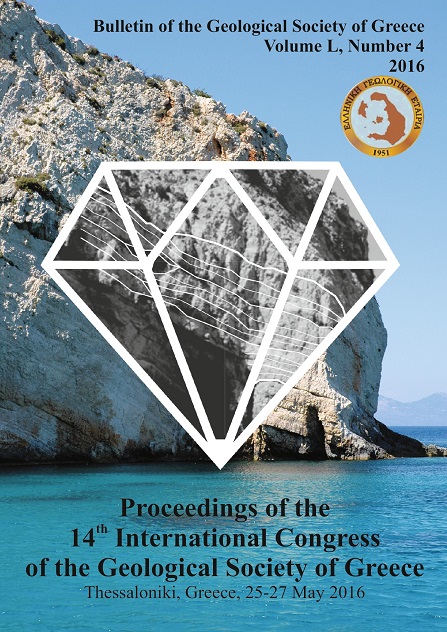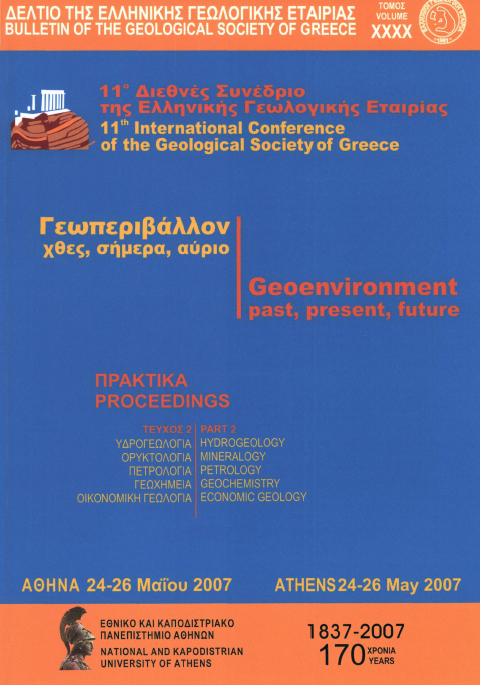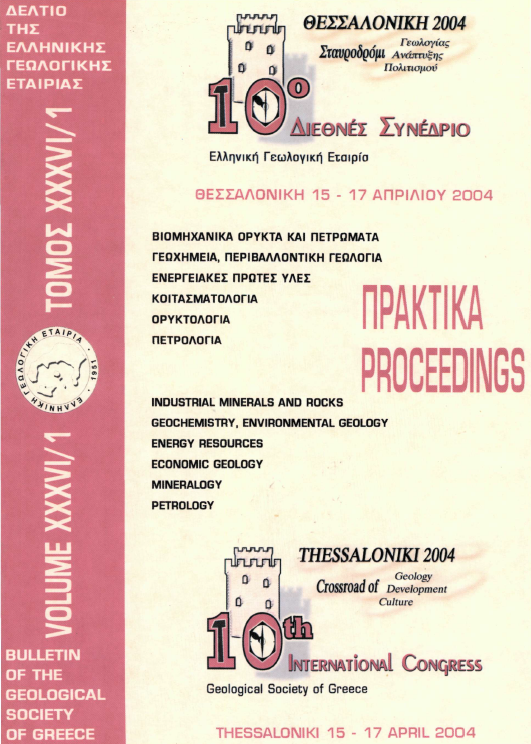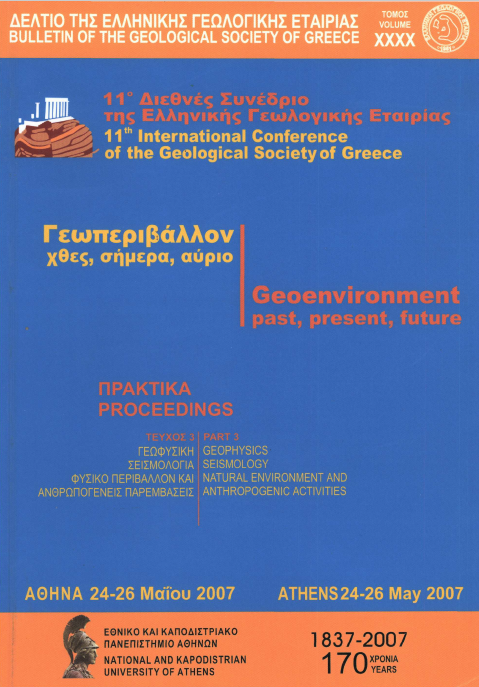TOURMALINITE VEINS AND BRECCIAS FROM THE SYMVOLON-KAVALA PLUTON, NORTHERN GREECE: PETROGENETIC PRELIMINARY RESULTS
Résumé
A previously undescribed tourmalinite rock consisting of tourmaline-rich veins and breccias occurs within the Lower Miocene Symvolon-Kavala granodiorite pluton, which intrudes the Lower Tectonic Unit of the Rhodope Metamorphic Province. Tourmaline, usually with crypto- to micro-crystalline grain size, is abundant within the matrix of breccias, also forming along with quartz and host rock clasts massive veins and injections in the fractures of the pluton. Field relations indicate that the tourmaline veins and breccias most likely formed in a brittle deformation regime, overprinting the previously developed foliation of the pluton. In addition, mineralogical and textural observations indicate that the precipitation of tourmaline was a result of cooling of B-rich hydrothermal fluids, implying for a possible magmatic-hydrothermal origin for the studied tourmalinite.
Article Details
- Comment citer
-
Xydous, S., Magganas, A., Pomonis, P., & Kokkinakis, A. (2016). TOURMALINITE VEINS AND BRECCIAS FROM THE SYMVOLON-KAVALA PLUTON, NORTHERN GREECE: PETROGENETIC PRELIMINARY RESULTS. Bulletin of the Geological Society of Greece, 50(4), 2079–2087. https://doi.org/10.12681/bgsg.14259
- Rubrique
- Petrology and Mineralogy

Ce travail est disponible sous licence Creative Commons Attribution - Pas d’Utilisation Commerciale 4.0 International.
Authors who publish with this journal agree to the following terms:
Authors retain copyright and grant the journal right of first publication with the work simultaneously licensed under a Creative Commons Attribution Non-Commercial License that allows others to share the work with an acknowledgement of the work's authorship and initial publication in this journal.
Authors are able to enter into separate, additional contractual arrangements for the non-exclusive distribution of the journal's published version of the work (e.g. post it to an institutional repository or publish it in a book), with an acknowledgement of its initial publication in this journal. Authors are permitted and encouraged to post their work online (preferably in institutional repositories or on their website) prior to and during the submission process, as it can lead to productive exchanges, as well as earlier and greater citation of published work.







